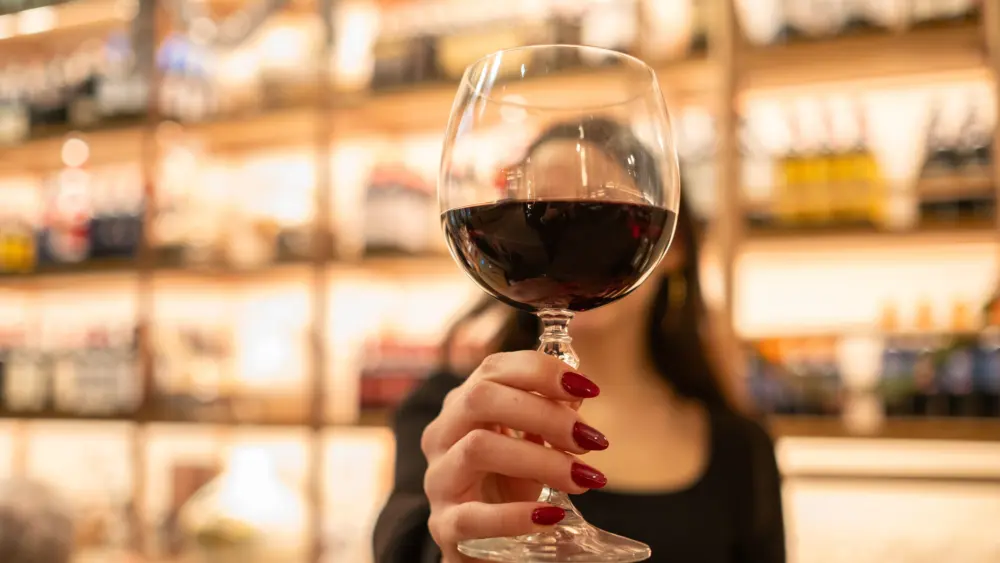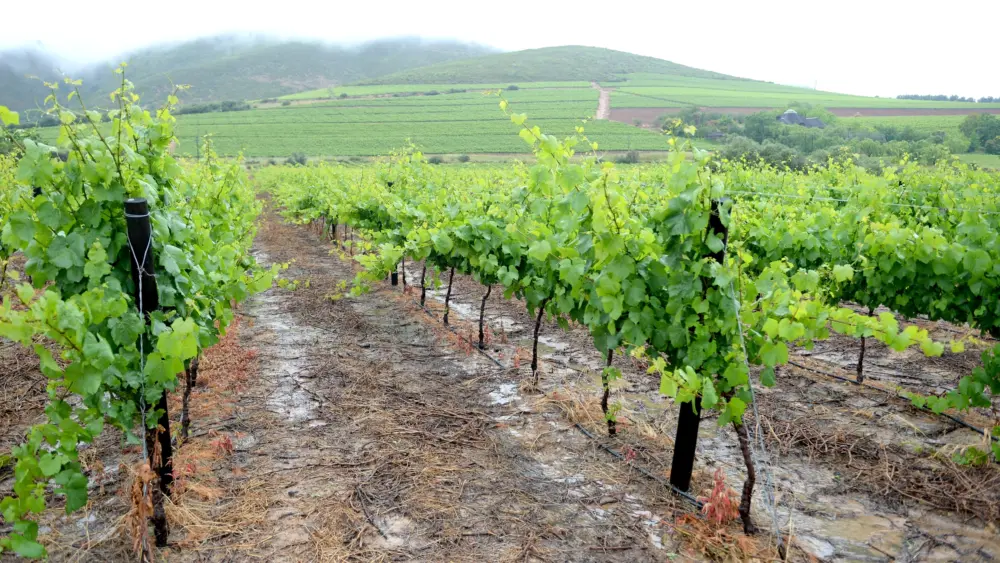I’m writing this column before harvest is underway (it’s been delayed a few weeks thanks to Mother Nature), which gives me a chance to guess what the end will look like. Going in, yields of just about all varietals look lower than normal (if one can define “normal”), while some, like Sauvignon Blanc and Zinfandel, are all over the board. The shortest crop appears to be Sauvignon Blanc—right when it has new, well-earned popularity.
With hardly any grapes picked prior to Labor Day weekend, it’s already a very late start. On the freeway, you only see a scattered few grape-hauling trucks, and they’re all headed north, probably coming up from Lodi or San Joaquin Valley. You can always tell out-of-area trucks, because they all have four big, green (in most instances), fiberglass bins outlined with black angle iron. Each bin holds about five tons. It’s surprising to see them around here, since our local winemakers won’t use them because “they excessively crush the grapes.” I wonder if that evens out with the 200- to 300-mile ride the grapes are getting. It always amazes me that we continually bad-mouth grapes from other areas and yet, judging by the trucks on the road, we crush a significant amount of that fruit. Maybe price has something to do with it. Why use all high-priced fruit when you can legally use up to 25 percent of the cheap stuff to blend? Or—and hopefully—you’re using it for a sound, California wine that sells for a reasonable price.
Grape prices have gone up some this year, and demand from the wineries’ side also seems up, so hopefully they all see something most economists don’t. Higher grape prices, from a grower’s standpoint, are obviously very good, but the downside is that yields are way down in many cases. My regular readers will remember that gross per acre is the only real number. If you’re getting $10,000 per ton but only a quarter-ton per acre, then $2,500 doesn’t cover many expenses. No one has figured out which direction the wine drinking population is going to move—will they go back to drinking expensive wines or will they be happy with the newfound, very good, less expensive wines they’ve discovered? You can bet that our North Bay wineries hope they’ll return to the top end, but as you see more and more small wineries either selling or disappearing, one has to wonder what the future will bring.
The biggest scary issue is the amount of lower-priced foreign wines joining the fray. The last big questions: Are many of the small wineries and growers capitalized well enough to stand another low-income year? What about the many small growers who thought the wine business was “cool” and started their own winery? How long will the bankers, who appear to be outlaws themselves, ride with the industry? The good times aren’t here yet.
Now a little more about Sauvignon Blanc: Unfortunately, I was 25 years ahead of my time, since back in the 1980s, I was recommending planting it as an alternate to Chardonnay. I figured no one would want to drink an oak stick with butter forever. OK, I was more than 30 years off, but today, we’re finally finding there are other very good white wines. We shot ourselves in the foot with Sauvignon Blanc by making several different styles; pretty soon, the consumer got confused and said, “The hell with it.” It’s not the first time consumer confusion has been a major marketing issue. Johannisberg Riesling is a glaring example, with its multiple sugar levels and no way to tell them apart. Dry Riesling is finally making a small comeback, and some of the best, fairly priced ones are from Clare Valley in South Australia—wonderful afternoon wines (on your way to your bottle-a-day).
Anyway, Sauvignon Blanc showed up as either Sauvignon Blanc or Fumé Blanc (thanks to Robert Mondavi), which was the first confusion. Next, it was either tropical, citrusy or herbaceous and grassy. The tropical and/or citrus ones were nothing, really, but white wine, and could have just as well been called Chenin Blanc. The grassy, herbaceous ones, like Rochioli, Dry Creek, Preston, Benziger and Bynum, were true to character and found niche drinkers who loved them—me included. A few appeared from the state of Washington with the far-end extension of herbaceous, called “cat-pee” (a true description), which helped deteriorate the market even more. Then, suddenly on the screen, enter New Zealand, which has now set the Sauvignon Blanc world on fire again. I knew I loved the Kiwis for more reasons than just having lived there for a time doing research with Dr. Richard Smart.
So what do we have now? A hot grape varietal but little fruit available to satisfy our needs. My best description of this scenario is, “sh__ happens.” Or it’s the story of my life—a day late and a dollar short or, in this case, a day early. A couple of interesting viticultural insights: Sauvignon Blanc is the most grower-manipulated grape there is. Changing cultural practices—irrigation, trellis and training, fertilizing and other factors can change its flavor patterns dramatically. The good guy/bad guy is sun exposure; Sauvignon Blanc needs not too much, not too little. The best thing is, high yields don’t hurt quality and seven to 10 tons per acre is realistic. This keeps prices down and lets wineries produce good wine at a fair price. The top end should be $15 unless you want to pay for a name or it’s almost gone—better buy it now! Boy, perceived shortage marketing programs are neat!
Now for homework: Go scout some good Sauvignon Blanc and, while you’re there, start looking for Pinot Gris (Grigio) as it climbs the popularity bandwagon. Happy harvest—if we ever finish. Do you really suppose Mother Nature is going to let us ride this out? By the time you read this, we’ll know.



